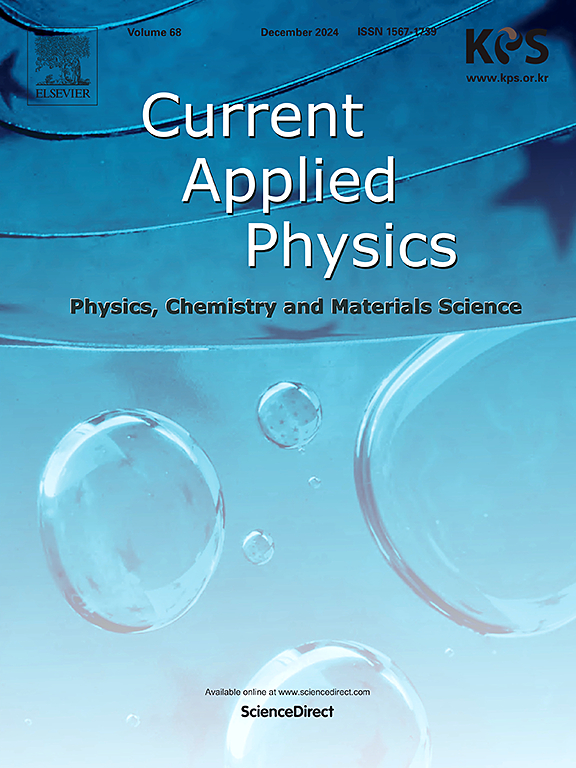异质结a-si:H/c-Si界面缺陷的热固化与本征薄层(HIT)太阳能电池工艺
IF 2.4
4区 物理与天体物理
Q3 MATERIALS SCIENCE, MULTIDISCIPLINARY
引用次数: 0
摘要
本研究探讨了利用热处理修复透明导电氧化物(TCO)沉积导致的a-Si:H/c-Si界面缺陷,通过降低界面缺陷密度(Dit)改善钝化效果。200°C的热处理提高了HIT太阳能电池的性能,在少数载流子密度为1.0 × 101 5 cm⁻³时,有效体积寿命增加到1.1 ms。关键性能指标得到改善,包括Jsc(从38.70到38.88 mA/cm2)、Voc(从727到730 mV)、FF(从75.50%到77.82%)和效率(从21.27%到22.09%)。AFORS-HET模拟显示,Dit必须小于1 × 1011 cm(毒枭)eV(毒枭)才能达到最佳效果。在模拟中获得的最佳太阳能电池性能包括:Jsc为37.71 mA/cm2, Voc为716.8 mV, FF为83.50%,Dit为1 × 10⁹cm⁻2 eV⁻1时的效率为22.57%。这种结合的方法为太阳能电池技术的缺陷管理提供了深刻的见解。本文章由计算机程序翻译,如有差异,请以英文原文为准。

Thermal curing of interface defects at a-si:H/c-Si in heterojunction with intrinsic thin layer (HIT) solar cell processing
This study explores the use of thermal treatment to recover defects at the a-Si:H/c-Si interface caused by transparent conductive oxide (TCO) deposition, improving passivation by diminishing interface defect density (Dit). A 200 °C thermal treatment enhanced HIT solar cell performance, increasing the effective bulk lifetime to 1.1 ms at a minority carrier density of 1.0 × 101⁵ cm⁻³. Key performance metrics improved, including Jsc (from 38.70 to 38.88 mA/cm2), Voc (from 727 to 730 mV), FF (from 75.50 % to 77.82 %), and efficiency (from 21.27 % to 22.09 %). AFORS-HET simulations showed that Dit must be less than 1 × 1011 cm⁻2 eV⁻1 for optimal efficiency. The best solar cell performance, achieved in simulations, included Jsc of 37.71 mA/cm2, Voc of 716.8 mV, FF of 83.50 %, and efficiency of 22.57 % at Dit of 1 × 10⁹ cm⁻2 eV⁻1. This combined approach offers insights into defect management for solar cell technology.
求助全文
通过发布文献求助,成功后即可免费获取论文全文。
去求助
来源期刊

Current Applied Physics
物理-材料科学:综合
CiteScore
4.80
自引率
0.00%
发文量
213
审稿时长
33 days
期刊介绍:
Current Applied Physics (Curr. Appl. Phys.) is a monthly published international journal covering all the fields of applied science investigating the physics of the advanced materials for future applications.
Other areas covered: Experimental and theoretical aspects of advanced materials and devices dealing with synthesis or structural chemistry, physical and electronic properties, photonics, engineering applications, and uniquely pertinent measurement or analytical techniques.
Current Applied Physics, published since 2001, covers physics, chemistry and materials science, including bio-materials, with their engineering aspects. It is a truly interdisciplinary journal opening a forum for scientists of all related fields, a unique point of the journal discriminating it from other worldwide and/or Pacific Rim applied physics journals.
Regular research papers, letters and review articles with contents meeting the scope of the journal will be considered for publication after peer review.
The Journal is owned by the Korean Physical Society.
 求助内容:
求助内容: 应助结果提醒方式:
应助结果提醒方式:


